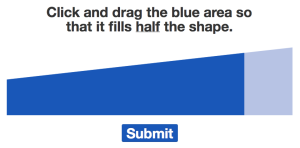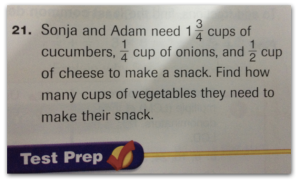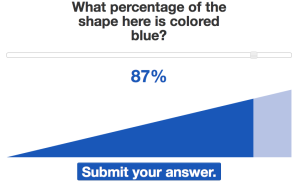Rambling about Desmos, Meteor, and the Math-Twitter-Blogosphere
By my last week in the states this summer, I had made it to San Francisco. Before getting to the hard work of eating sourdough and tinkering my way through the Exploratorium, I made two stops that were really special.
The first was a chance to meet the Desmos team at their office, arranged by Dan Meyer, who was planning to be at the office. I walked into the office while the team, not two days from the successful release of their newest activity Central Park, was on a conference call discussing the next project. As my time with them went on, I periodically felt a wave of giddiness at the fact that I was sitting with some of the people responsible for making Desmos what it is.
The four people that I met there, two thirds of the entire team, had their hands in making a difference in hundreds (if not thousands) of classrooms around the world. Jason shared that his changes to some code had resulted in a substantial increase in the code speed. Jenny showed her prototypes for a beautiful new user interface. Eric repeatedly referred to the guiding principles of Desmos as they made decisions about moving forward. The careful, deliberate work done by this group of passionate people is the reason Desmos is able to create the collaborative learning experiences for which they are known.
At one point, David Reiman, one of the team members and a former teacher himself, asked me what they could do for me. Honestly, all I could muster was that it was an honor to learn from them and see their workflow. They put a lot of energy into making sure their tools are useful for reaching objectives in the classroom, not for the sake of merely being used in the general category of technology. I really appreciate Dan, Eric, Eli, and the rest of the team for arranging to spend time with me.
The next day involved a visit to Meteor headquarters for their monthly Devshop. This is a meeting that gets Meteor coders and entrepreneurs in one room with the goal of everyone helping each other. It was impressive to meet in person some people that I had really seen only as Twitter handles. They were all incredibly genuine, humble people that worked really hard on work that mattered to them. I gave a lightning talk on coding for the classroom (posted here on YouTube) and using code to make my life as a teacher easier. Mine was one of a series of such talks. They were streamed live on the internet, but it seemed much more intimate in the actual room. Each person had three minutes to talk about an idea that mattered to them. It was also a treat that people that came up to me to chat afterwards – some of them teachers themselves – to talk about teaching, coding, and the challenges of teaching effectively with technology.
The theme that struck me after both days, a theme that I think resonates strongly with the beauty of the existence of the Math-Twitter-Blog-o-sphere, is not just that individuals (and teams) are doing interesting, thought-provoking work. That has been true for a long time.
The people at Desmos and Meteor are designing tools that enable others to not just explore their ideas, but develop, build, and share them. Just as these tools are created iteratively (Meteor released version 0.9 today) they encourage others to make the most of what is out there to put ideas in front of an audience and make them better over time. That audience might be a classroom of students. It might be an audience craving a useful online tool that targets their unique niche. Everyone at these companies (and in classrooms) is hoping that the next idea they try is one that gets more people excited than the last. Teachers work in a similar vein hoping that their next idea for tweaking a lesson gets more students engaged and making connections than the last.
I’ve spent the past three academic years interacting with people through this blog, Twitter, and other online channels. I’ve shared ideas here and have gotten feedback on them from a number of different perspectives. All of us are working hard. We have ideas and share them because ideas sprout new ideas. This process is addictive. We all have our pet projects and obsessions, and need to be brought back to reality from time to time about what will really work most effectively. We listen to each other and value the conversations that happen.
As this year is getting underway, I’m going to work to keep something in mind this year. We all have governing principles that help us decide what work to tackle at a given point in time. We often wait to share ideas until they are fully formed, but that’s not really when we need the most feedback. I hope to share more ideas when they are raw and still forming. Bad days, especially when they are still smarting from an unsuccessful lesson, are revealing. It’s in these situations that we stand to grow the most. What makes innovative companies like Meteor and Desmos successful isn’t that they have the best ideas from the beginning. It’s that they know how to cultivate ideas from beginning to end, and aren’t afraid to make mistakes along the way. They acknowledge that there are lots of starts and stops and hiccups before ending up on the idea that will make a difference to people.
Have a great school year, everybody!



















